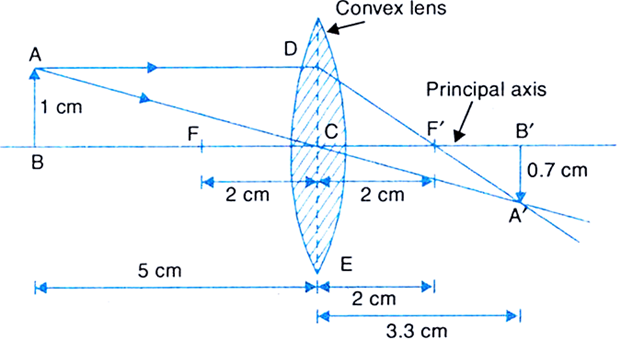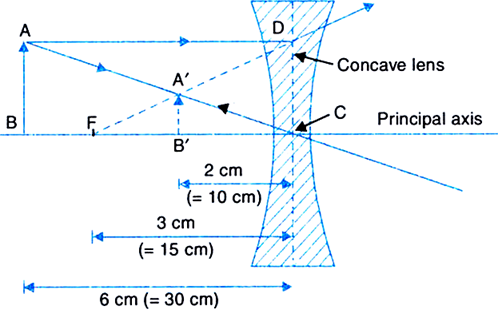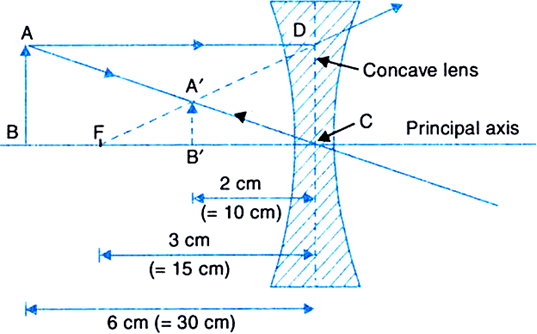An object 5 cm in length is held 25 cm away from a converging lens of focal length 10 cm. Draw the ray diagram and find the position, size and the nature of the image formed.
The lens considered in the question is converging lens which is the convex lens.
Given,
Object size, h = 5 cm
Object distance, u = -25 cm
Focal length, f = 10 cm
As the distances given in the question are large, so we choose a new scale where, 1 cm represents 5 cm.
So, as per the new scale,
Size of the object, h = 1 cm
Object distance, u = -5 cm
Focal length, f = 2 cm.
The ray diagram can be drawn as follows:
(i) Draw a horizontal line representing the principal axis of the convex lens.
(iii) Mark two foci F and F' on two sides of the lens, each at a distance of 2 cm from the lens.
(iv) Draw an arrow AB of height 1 cm on the left side of lens at a distance of 5 cm from the lens.
(v) Draw a line AD, parallel to principal axis and then make it pass straight through the focus (F') on the right side of the lens.
(vi) Draw a line from A passing through the centre of curvature, which goes straight without deviation.
(vii) Let the two lines starting from A meet at A' on the right side of the lens.
(viii) Draw A'B', perpendicular to the principal axis.
(ix) Now A'B', represents the real, but inverted image of the object AB.
Using the lens formula,
Also, we know that,
Since the image distance is positive, the image is real (formed on the right side of lens) at a distance of 3.3 cm. 
Therefore as per the original scale,
(a) Position of image A'B' = 3.3 cm × 5 = 16.5 cm from the lens on opposite side.
(b) Nature of image A’B’: Real and inverted.
(c) Height of image A'B': 0.7 × 5 = 3.5 cm, i.e., image is smaller than the object.







